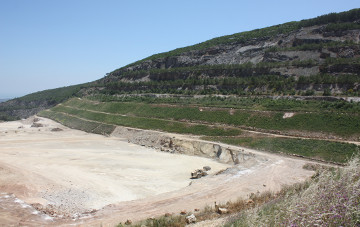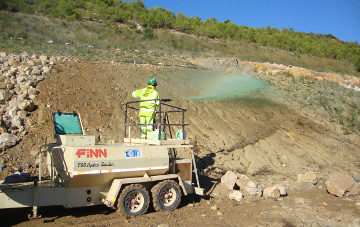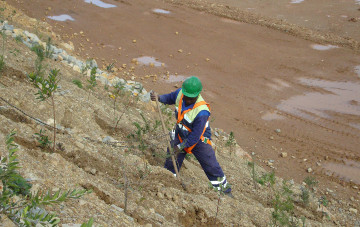The Quarry
Efforts to revegetate two contiguous quarries (limestone and marl) at Outão (Serra da Arrábida Natural Park, SW Portugal) were initiated by Secil (cement company) in 1983,
with the primary goals of reducing the visual impact of bare rock and of landscape integration, taking the surrounding undisturbed ecosystem as a reference.
Excavation of the hill face was conducted from top to bottom, resulting in a stair-like sequence of terraces.
In the limestone quarry, a substrate (mainly marl spoils, with high clay and stone contents) was spread on each terrace, and woody species were planted (mostly native).
In 2002, this excavation design changed, and terraces were replaced by a series of slopes, as in the neighbour marl quarry.
Here, the terraces are backfilled to create slopes where the marl substrate is laid. To prevent erosion and favour stabilization,
slopes are hydroseeded (with herbs and small shrubs) soon after they are built, and then planted with native woody species.


